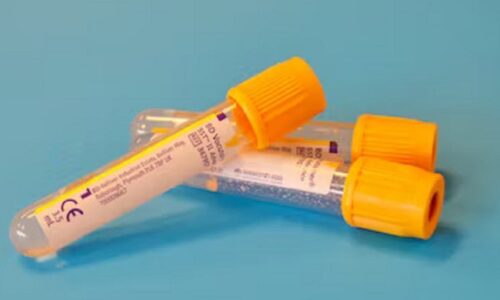
What Autoimmune Diseases Cause Low Eosinophils
Autoimmune diseases constitute a diverse group of disorders where the body’s immune system erroneously attacks its own tissues. This complex interplay between the immune system and the body’s cells and organs can result in a myriad of symptoms and complications. One intriguing aspect of autoimmune diseases is the potential impact on eosinophil levels, a type of white blood cell crucial for immune system function. In this exploration, we delve into various autoimmune conditions associated with low eosinophil counts.
Rheumatoid Arthritis: Unraveling the Links to Eosinopenia
The joints are the main organs affected by rheumatoid arthritis (RA), a chronic inflammatory disease. However, the immune system’s assault on the synovium, the membrane lining the joints, can extend beyond the musculoskeletal system. Recent studies have hinted at a connection between RA and eosinopenia, a condition characterized by abnormally low levels of eosinophils.
Eosinophils, typically involved in defending against parasitic infections and modulating inflammatory responses, may experience dysregulation in individuals with RA. The exact mechanisms behind this association remain a subject of ongoing research, but it highlights the intricate interplay between autoimmune processes and the cellular components of the immune system.
Systemic Lupus Erythematosus (SLE): Unmasking the Relationship with Eosinophil Levels
Systemic Lupus Erythematosus (SLE) is a systemic autoimmune disease affecting various organs, including the skin, joints, kidneys, and more. The hallmark of SLE is the production of antibodies that target the body’s tissues, leading to inflammation and damage. While the primary focus of SLE research often centers on its diverse clinical manifestations, investigations into blood abnormalities, including eosinophil counts, have revealed intriguing findings.
Eosinopenia has been observed in some individuals with lupus, further complicating the understanding of immune dysregulation in this disease. The intricate dance between autoantibodies and eosinophils opens avenues for exploring novel therapeutic strategies that consider the broader immune context in SLE.
Sjögren’s Syndrome: Dry Eyes, Dry Mouth, and Eosinopenia?
Sjögren’s Syndrome is characterized by dry eyes and dry mouth due to immune-mediated damage to the salivary and lacrimal glands. This autoimmune disorder can extend its reach beyond exocrine glands, affecting various systems, including the blood. Research has indicated a correlation between Sjögren’s Syndrome and eosinopenia, suggesting a systemic impact on immune cell populations.
Understanding the link between Sjögren’s Syndrome and eosinopenia could shed light on the broader immune alterations in this condition. Unraveling these connections might pave the way for more comprehensive treatment strategies targeting both the local and systemic aspects of autoimmune diseases.
Systemic Sclerosis: Bridging the Gap Between Fibrosis and Eosinopenia
Systemic Sclerosis, commonly known as scleroderma, is a rare autoimmune disease characterized by excessive collagen production, leading to fibrosis and thickening of the skin and internal organs. While the primary focus in systemic sclerosis research often centers on fibrotic processes, recent studies have brought attention to alterations in blood cell populations, including eosinophils.
The correlation between eosinopenia and systemic sclerosis prompts exploration into whether immune dysregulation contributes to the fibrotic processes seen in this condition. This connection could open avenues for targeted therapies addressing both the immune system and the fibrotic pathways in systemic sclerosis.
Systemic Vasculitis: Navigating the Complexity of Blood Vessel Inflammation
Systemic Vasculitis encompasses a group of disorders characterized by inflammation of blood vessels. Within this category, conditions like Granulomatosis with Polyangiitis (GPA) and Eosinophilic Granulomatosis with Polyangiitis (EGPA) present distinct challenges and opportunities for research.
EGPA, characterized by asthma, eosinophilia, and vasculitis, naturally involves alterations in eosinophil levels. However, some individuals with systemic vasculitis may experience eosinopenia due to the dysregulation of immune responses. Understanding the nuances of eosinophil dynamics in systemic vasculitis is crucial for tailoring treatment approaches and predicting disease outcomes.
Conclusion
In conclusion, autoimmune diseases represent a multifaceted challenge to both researchers and clinicians. The intricate interplay between the immune system and eosinophils adds another layer of complexity to our understanding of these conditions. While eosinophilia is commonly associated with some autoimmune diseases, the phenomenon of eosinopenia opens new avenues for investigation.
The connections between autoimmune diseases and eosinophil levels underscore the need for a holistic approach in diagnosis and treatment. As we delve deeper into the mechanisms governing these relationships, we move closer to unraveling the mysteries of autoimmune diseases and developing more targeted and effective therapeutic interventions. The journey to comprehend the complexities of autoimmunity and eosinophils continues, with each discovery bringing us closer to a more nuanced understanding of these intricate immunological processes.
Janvi Dhiman
Janvi Dhiman holds a Master's degree in Biotechnology and has a background in both undergraduate and postgraduate studies from Amity University, Noida. Her passion lies in making meaningful contributions to the healthcare and research sectors. Currently, she is a valued member of our team, serving as a Research Analyst and a medical content writer at DiseaseInfoHub.




